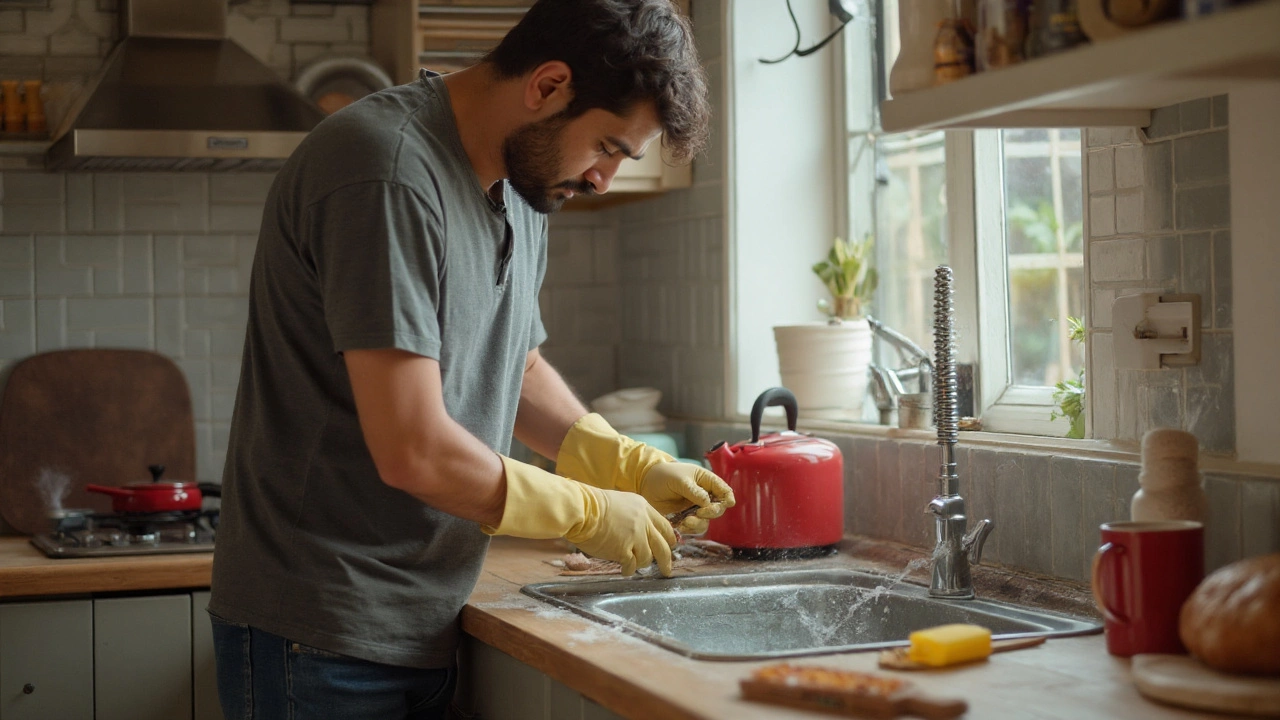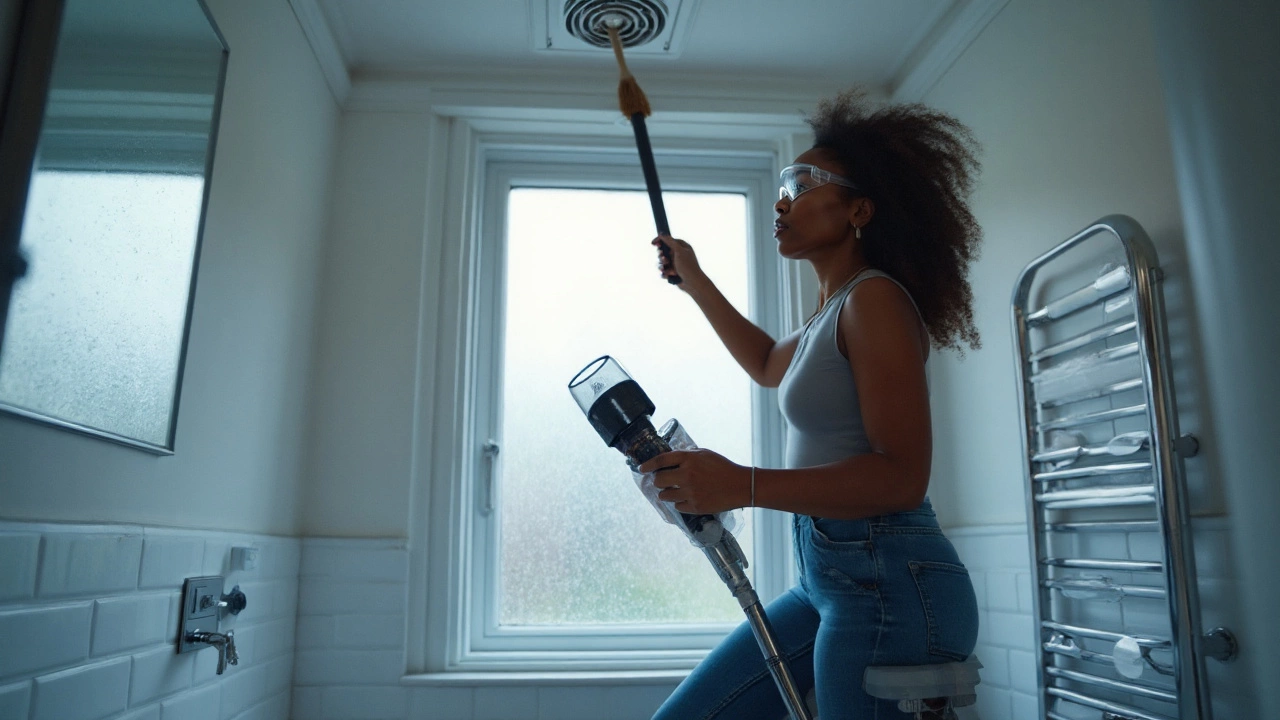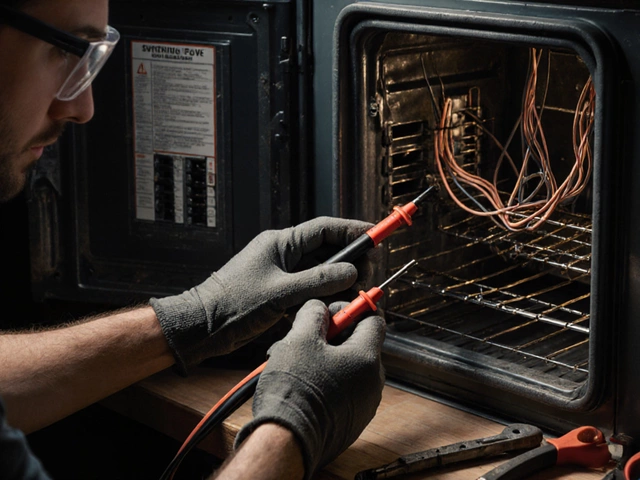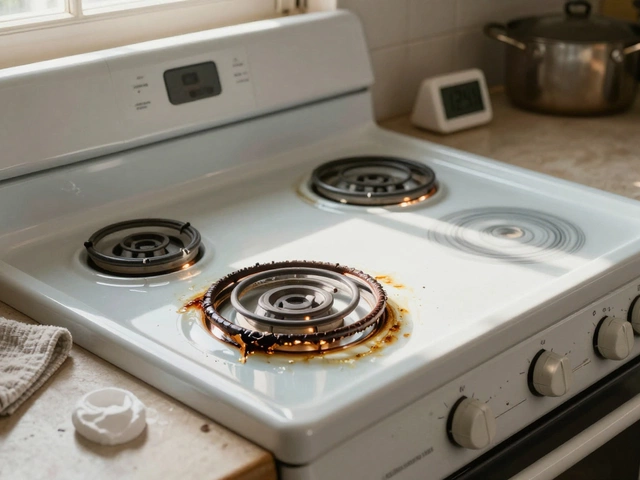If your bathroom mirror still fogs up after a shower or your kitchen smells linger long after dinner, your extractor fan isn’t doing its job. Fans don’t look high-maintenance, but they quietly hoover up steam, grease, and dust every day. Without simple cleaning, they choke, get noisy, and eventually fail. The fix isn’t fancy-it’s regular care you can do with a cloth and a screwdriver. And if you rent in New Zealand, a working, ducted fan in kitchens and bathrooms isn’t just nice to have-it’s required under the Healthy Homes Standards. So yes, maintenance matters, and it pays off quickly in clearer air, drier rooms, and fewer repairs.
- TL;DR
- Yes, extractor fans need simple, regular care: clean the grille and blades, wash kitchen filters, and check ducts and dampers.
- Bathroom: quick dusting every 3-6 months; kitchen: degrease filters monthly if you cook most days.
- Quick test: hold toilet paper to the grille-if it won’t stick, airflow is weak.
- In NZ rentals, fans must work and vent outside. Poor maintenance risks mould and compliance issues (MBIE Healthy Homes; NZ Building Code G4).
- Replace a tired fan every 7-10 years; rangehood filters more often. Fix small issues early to avoid motor failures.
Why extractor fans need maintenance (and what “good enough” looks like)
The short answer is yes-because fans lose performance as dust, lint, and grease build up. Even a thin film on the blades or grille can cut airflow, and once the duct gets clogged, you’re basically running a noisy light with a spinning decoration. Bathroom fans pull in moist air and lint; kitchen fans add sticky oil to the mix. That sludge coats blades, bearings, and the duct. Left alone, it turns steady airflow into a whine and a wobble.
What does good maintenance deliver? Three things you can feel: faster steam clear after showers, fewer cooking smells hanging around, and a quiet fan that starts cleanly without groaning. The bonus is lower moisture in walls, ceilings, and wardrobes-less mould, less paint damage, and healthier indoor air.
In New Zealand, the Building Code (Clause G4 Ventilation) sets the performance bar, and the Healthy Homes Standards require kitchens and bathrooms in rentals to have working extractor fans that vent to the outside. That last bit matters. A recirculating rangehood with a charcoal filter cleans some odours but doesn’t remove moisture. If you’re renting, your landlord must keep these systems in reasonable working order. If you own, staying on top of simple upkeep protects your home. That’s the regulatory layer behind the everyday reality: dirty fans don’t move air.
Here’s what fails when you skip maintenance:
- Airflow drops. Dust on the grille can cut bathroom fan performance by a third or more. Grease on kitchen filters can halve flow in months for daily cooks.
- Noise climbs. A clogged fan works harder. Bearings get dry. Vibration starts. You’ll hear the hum change first.
- Energy waste. A choked fan runs longer for the same job.
- Condensation and mould. You’ll see it as black spotting on bathroom ceilings and swollen door edges.
- Smell and residue. Kitchens get sticky if the rangehood can’t breathe.
So yes, extractor fan maintenance isn’t optional if you want your fan to do what it promises. The good news: most of it is simple and takes under 10 minutes once you know the steps.

Step-by-step upkeep, schedules, and quick tests (bathroom and kitchen)
Think in two lanes: bathroom fans (ceiling/wall extractor) and kitchen fans (rangehoods-ducted to outside or recirculating). The basics are similar: keep air paths clear, keep blades and filters clean, and verify airflow.
1) Bathroom extractor fans: 10-minute clean
- Power off. Flip the switch or isolate the circuit if the cover is wired.
- Remove the cover/grille. Most snap off; some have two small screws.
- Vacuum dust. Use a soft brush on the grille, motor housing, and blades.
- Wipe blades. A damp microfibre cloth with a drop of dish soap works. Avoid soaking the motor.
- Check the damper. At the fan or at the exterior vent, the flap should swing freely and not stick open. A stuck flap lets cold air and pests in.
- Inspect the duct. Shine a torch. If you see heavy lint or water pooling, plan a deeper clean or replacement of crushed ducting.
- Refit the cover and test. The fan should start quickly and sound smooth.
2) Kitchen rangehoods: filter and duct care
- Power off. If it’s hardwired, just be sure controls are off.
- Remove filters. Mesh filters pop out; baffle filters slide. Charcoal filters (recirculating hoods) twist or clip off inside.
- Clean metal filters. Soak in hot water with dish soap and a tablespoon of baking soda. Rinse, dry fully, refit. Or run through the dishwasher (top rack, gentle cycle).
- Replace charcoal filters. Every 3-6 months if used often. They don’t wash.
- Wipe the fan housing and blades. Use a degreaser sparingly-avoid dripping into the motor.
- Check the duct and exterior vent. Duct should be smooth-walled where possible and not crushed. Exterior flap should open/close freely.
- Test on high. Airflow should be strong and even, without rattles.
3) Quick airflow checks you can do in a minute
- Toilet paper test (bathroom): Hold a single sheet to the grille. If it sticks easily, you’ve got decent suction. If it flutters or drops, clean the fan and try again.
- Mirror fog time: After a hot shower with the door closed and fan on, the mirror should clear in 3-5 minutes.
- Paper towel test (rangehood): With the hood on high, it should hold a paper towel firmly over the filter area. Weak hold = clogged filter or duct issue.
- Exterior vent check: Ask someone to switch the fan on while you watch the outside hood. The flap should open quickly; you should feel a strong flow.
4) How often to maintain (simple schedule)
- Bathroom fan: dust/wipe every 3-6 months; deeper clean yearly.
- Kitchen mesh/baffle filters: monthly if you cook most days; every 2-3 months for light use.
- Charcoal filters: replace every 3-6 months (recirculating hoods).
- Ducts and exterior hoods: inspect yearly; clean or replace crushed/greasy sections.
- Fan replacement: expect 7-10 years for many bathroom fans; 8-12 for rangehood motors, longer if well maintained.
5) Signs you have a problem
- New noise: buzzing, scraping, or slow spin on start.
- Visible dust blanket on the grille or sticky residue on the rangehood.
- Musty smell in the bathroom or lingering cooking odours.
- Condensation dripping from the vent or staining around it.
- Exterior flap stuck open or closed, or birds nesting in the hood.
6) Simple fixes before calling a pro
- Lubricate lightly? Most modern fans have sealed bearings-no oiling. If yours has service ports (rare), a drop of light machine oil can quiet it. Don’t saturate.
- Balance a wobbly blade by cleaning thoroughly and tightening fasteners. Check that the impeller isn’t cracked.
- Replace a damaged damper with a new inline backdraft damper sized to your duct (100mm and 125mm are common in NZ).
- Swap cheap flexible ducting for semi-rigid or smooth rigid duct with gentle curves. Shorter, straighter runs move more air and stay cleaner.
| Task | Where | Frequency | Time Needed | DIY Cost | Notes |
|---|---|---|---|---|---|
| Vacuum and wipe grille/blades | Bathroom fan | 3-6 months | 10 minutes | $0 | Biggest bang for buck in airflow and noise reduction |
| Wash mesh/baffle filters | Rangehood | Monthly (heavy use) | 15 minutes | $0-$5 | Dishwasher-safe in many models |
| Replace charcoal filter | Recirculating hood | 3-6 months | 5 minutes | $25-$60 | Does not remove moisture; only odours |
| Inspect/clean duct & exterior hood | Bathroom & kitchen | Yearly | 20-40 minutes | $0-$30 | Check for crushed ducting, stuck flaps, nests |
| Replace backdraft damper | Inline or exterior | As needed | 20 minutes | $15-$40 | Stops cold drafts & pests |
| Fan replacement | Bathroom fan | 7-10 years | 1-2 hours | $120-$350 + install | Consider quieter, higher-flow models |
| Motor service/replacement | Rangehood | 8-12 years | 1-2 hours | $200-$600 + install | Often cheaper to replace the unit if very old |
7) A simple decision rule
- If it’s noisy, slow, and dirty-clean first.
- If airflow is still weak after cleaning-check the duct and damper.
- If the motor hums but won’t spin-replace the capacitor (if present) or the fan.
- If the fan is over 10 years old and underperforms-cost out a replacement.
Safety notes
- Cut power before removing wired covers or working near terminals.
- Use mild cleaners; harsh solvents can damage plastics and paint.
- Don’t block intake clearances or pack insulation hard around the fan body-check the model’s instructions.
- For rentals in NZ, landlords must maintain fans so they keep working and vent outside (MBIE Healthy Homes guidance).
Why I care
I live in Auckland. Our winters are damp, and kids like my son Finn take long showers. A bathroom fan that’s 20% clogged means the mirror stays foggy and the ceiling stays wet. A 5-minute clean turns the dial from soggy to sorted. That’s the day-to-day reality at home, and the reason I keep a step stool and a microfibre cloth in the laundry.

Troubleshooting, FAQs, and what to do next
Most problems fall into a few patterns. Use these quick diagnoses and fixes before you book a repair.
Problem: Fan is loud, rattly, or buzzing
- Cause: Dust on blades creates imbalance; loose screws; worn bearing; something touching the impeller.
- Fix: Clean and tighten. If noise remains and the unit is older than 8-10 years, plan a replacement.
Problem: Fan runs but doesn’t pull air
- Cause: Clogged grille/filter, crushed duct, stuck outside flap, damper installed backwards, too-long duct with too many bends.
- Fix: Clean, straighten, replace damper, shorten duct runs. For bathrooms, upgrade to a higher static-pressure fan if the run is long.
Problem: Moisture dripping from the vent
- Cause: Condensation in uninsulated duct in cold roof spaces; sagging duct making a trap; exterior hood letting rain in.
- Fix: Insulate the duct; slope it slightly to the exterior; remove sags; replace the exterior hood with a better weather hood.
Problem: Fan doesn’t start or trips breaker
- Cause: Failed motor or capacitor; seized bearings; water ingress.
- Fix: Check for obstructions; if seized, replacement is often best. Hire a licensed sparky for wiring faults.
Problem: Kitchen rangehood lights work but airflow is weak
- Cause: Clogged mesh filters or spent charcoal filters; grease-caked impeller; duct restriction.
- Fix: Wash or replace filters; clean the impeller; inspect duct.
Problem: Cold drafts through the fan
- Cause: Failed backdraft damper or missing exterior flap.
- Fix: Fit a good damper; check that it isn’t stuck with paint or grease.
FAQ
- Do I really need to clean bathroom fans? Yes. Even a thin dust layer cuts airflow and increases noise. It’s the quickest home air quality win.
- How often should I run the bathroom fan? During your shower and 10-20 minutes after. A timer or humidity sensor switch helps.
- Are recirculating rangehoods OK? They reduce smells with charcoal filters but don’t remove moisture. For NZ compliance in rentals, kitchens need a fan that vents outside.
- Is duct length a big deal? Yes. Shorter and straighter is better. Each bend kills flow. Use smooth, rigid duct where you can.
- What size fan do I need? Bathrooms usually use 100-125mm duct fans. Bigger rooms or long ducts may need higher static pressure models or 150mm ducting.
- What about heat pump moisture removal? Heat pumps help with humidity, but they don’t replace point extraction at the source.
- Can I DIY replace a bathroom fan? Often, yes, if the wiring is straightforward and you’re swapping like-for-like. Otherwise, use a licensed electrician.
Cheap gear that helps
- Microfibre cloths and a soft brush head for the vacuum.
- Dish soap and a splash of baking soda for greasy filters.
- A $20 anemometer if you want to measure airflow at the grille and track improvements.
- Foil duct tape (not fabric duct tape) for sealing joints after checks.
When to stop cleaning and replace
- If the fan is 10+ years old, noisy, and underpowered even after cleaning.
- If the plastic is brittle or the impeller is cracked.
- If the duct is long, small, and kinked-and fixing it means major work. Sometimes a new, more capable fan is the easier win.
- If parts are unavailable or costly compared to a new unit.
Choosing a better replacement (quick criteria)
- Airflow and pressure: Look for higher litres-per-second (L/s) and good static pressure if your duct run is long.
- Noise: Check dB(A). Quieter fans get used more often.
- Control: A run-on timer or humidity sensor cuts condensation without you thinking about it.
- Duct size: Upsize to 125-150mm if you can when replacing. Bigger ducts move more air, more quietly.
- Weather hood: Upgrade the exterior hood to a design that sheds rain and resists wind backflow.
Compliance and credibility
In New Zealand, the Building Code G4 covers ventilation in buildings, and MBIE’s Healthy Homes Standards require rental kitchens and bathrooms to have working extractor fans vented to the outside, with minimum capacity levels. Landlords must maintain them so they keep performing. These standards aren’t about red tape-they’re there because ventilation reduces moisture, mould, and health issues linked to damp homes. BRANZ has long flagged poor ventilation and condensation as common issues in Kiwi houses. Regular upkeep is the simplest lever you control.
My simple maintenance calendar
- First weekend of March and August: bathroom fans off, covers off, quick vacuum and wipe.
- First Sunday monthly: rangehood filters in the sink while the kettle boils.
- Spring: check ducts and exterior vents when I’m already clearing gutters.
Do this, and your extractor fans will actually extract. Your bathroom will dry faster. Your kitchen won’t smell like last night’s fish. And you’ll likely avoid the big bills-like a seized motor or soaked ceiling-by catching the small stuff early.
Next steps
- Do the 1-minute toilet paper test in your bathroom and the paper towel test on your rangehood today.
- If weak, clean the grille/blades or filters. Retest.
- Still weak? Inspect the duct and the outside vent. Fix any kinks or stuck flaps.
- Note the fan’s model and age. If it’s past its best and still underperforms, price a replacement with better airflow and a timer.
- If you’re renting in NZ and the fan is broken or vents into the roof space, ask your landlord to fix it-Healthy Homes Standards apply.
Troubleshooting by scenario
- Small windowless bathroom: Upgrade to a higher-pressure inline fan with a timer and 125-150mm duct; keep bends minimal.
- Open-plan kitchen: Use a ducted rangehood sized to your cooktop; keep the duct big and short; clean filters monthly.
- Coastal home: Exterior hoods corrode-choose stainless or UV-stable plastic with a good flap. Inspect yearly.
- Old villa with long duct runs: Inline fans in the roof space often beat through-the-ceiling units. Insulate ducts to avoid condensation.
Quick recap: yes, extractor fans need maintenance. But it’s easy, cheap, and the payoff shows up the next time you shower or sear a steak. Do the short clean, fix obvious duct issues, and replace tired fans on your terms-not when they quit on a cold, wet night.





